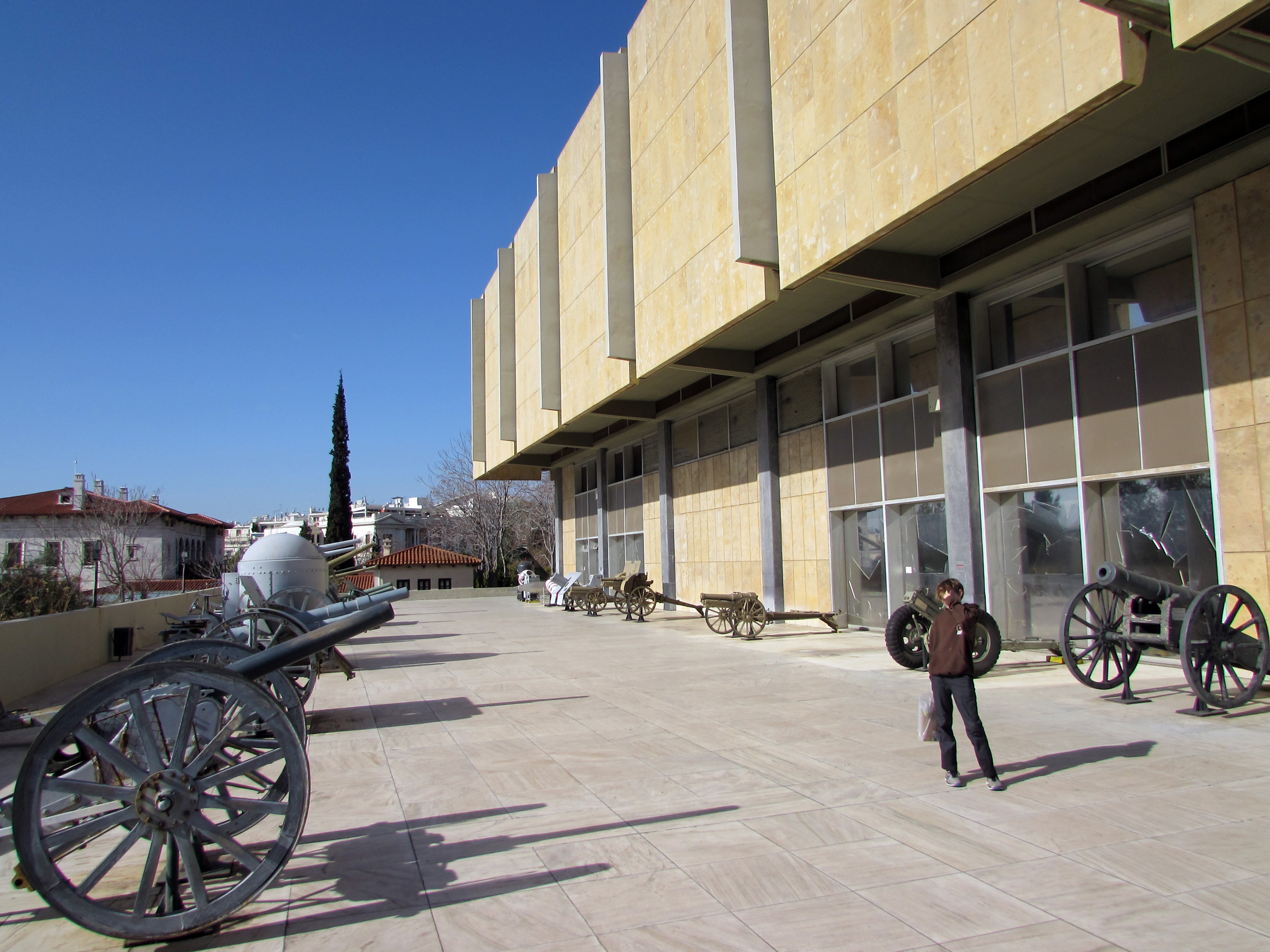
The museum's back porch had many examples of WWII Anti-Tank guns from various factions
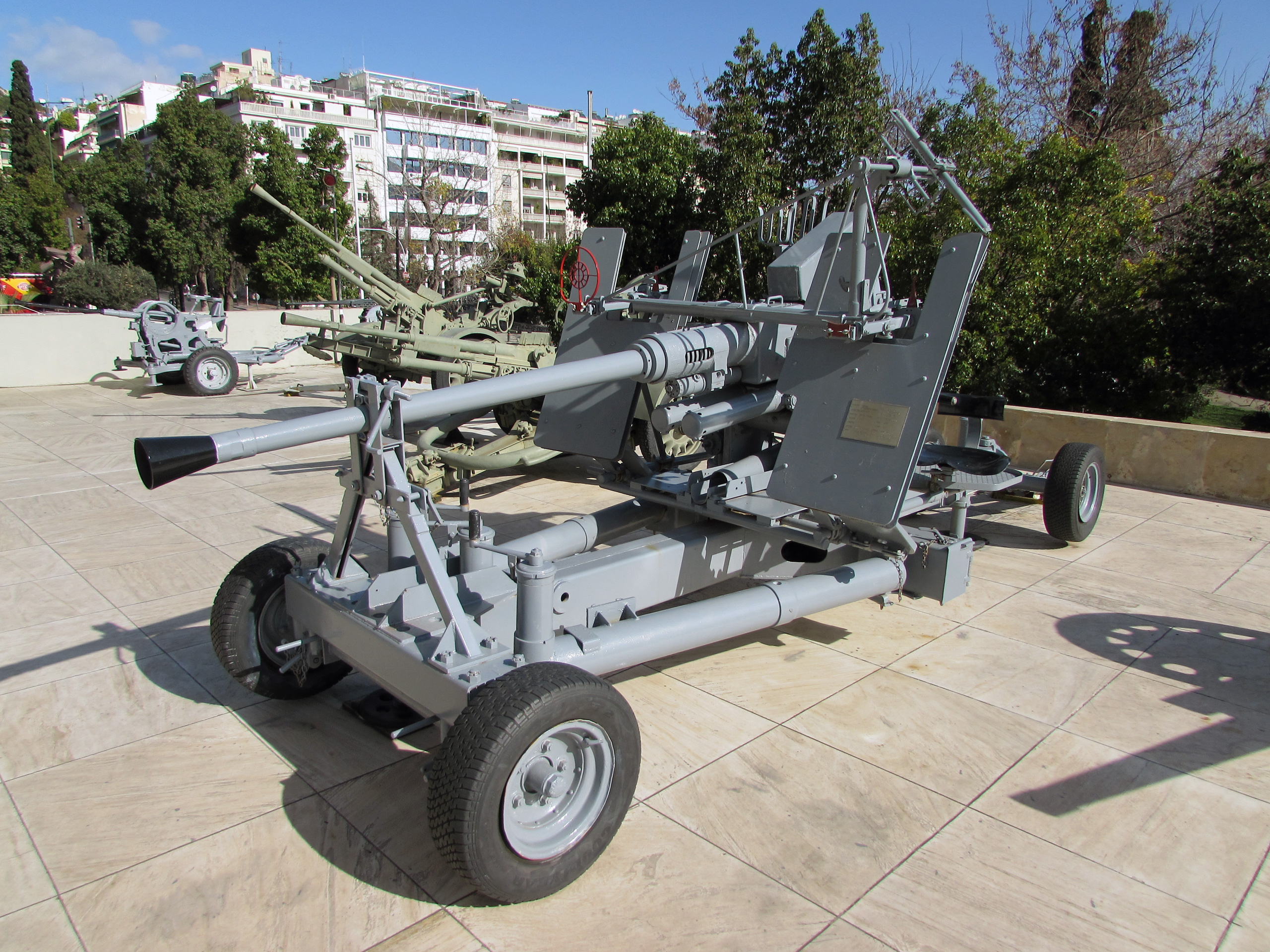
A mobile British Bofors 40mm anti-aircraft multipurpose gun
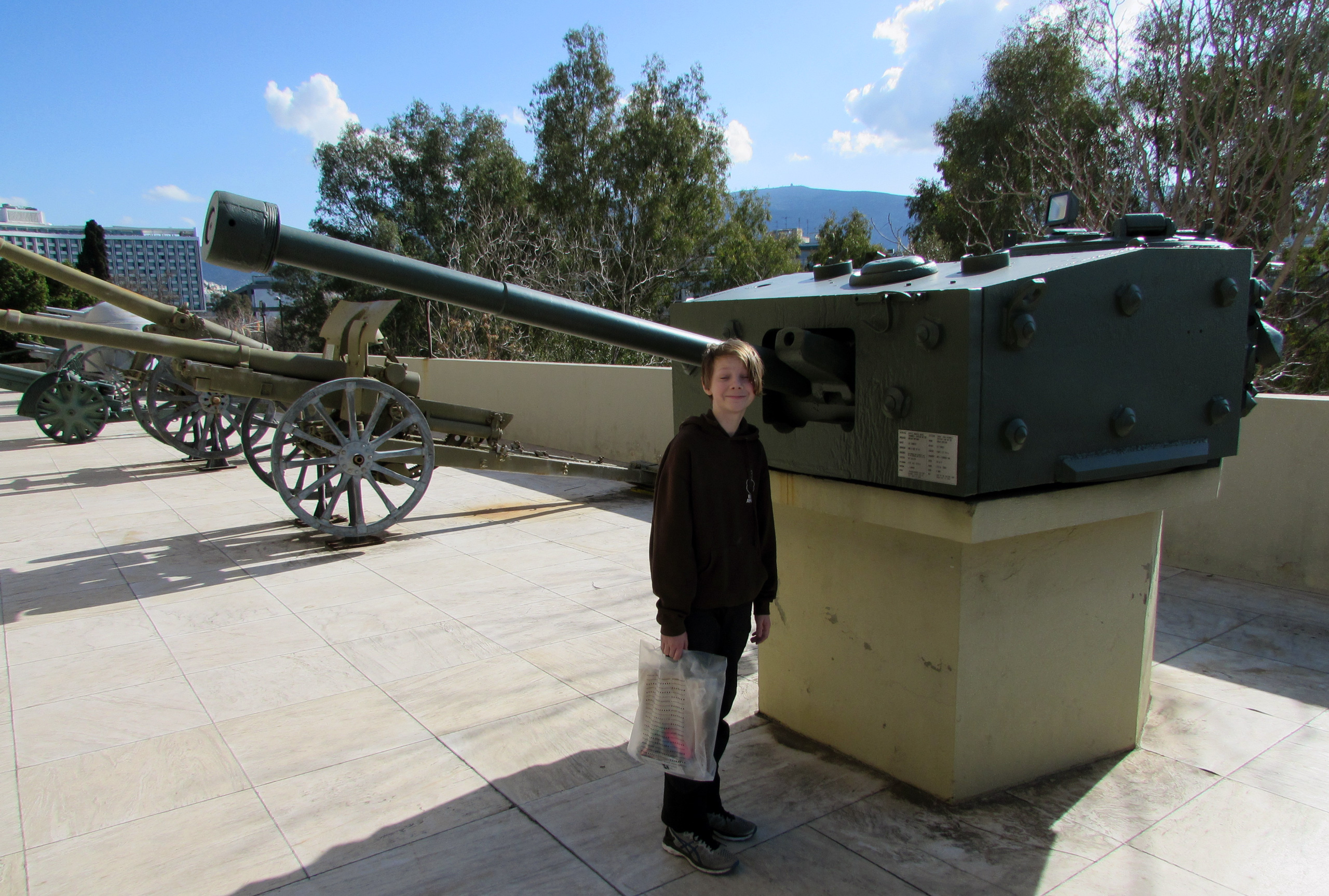
My son squinting in the sun, in front of the turret of a British Cromwell tank
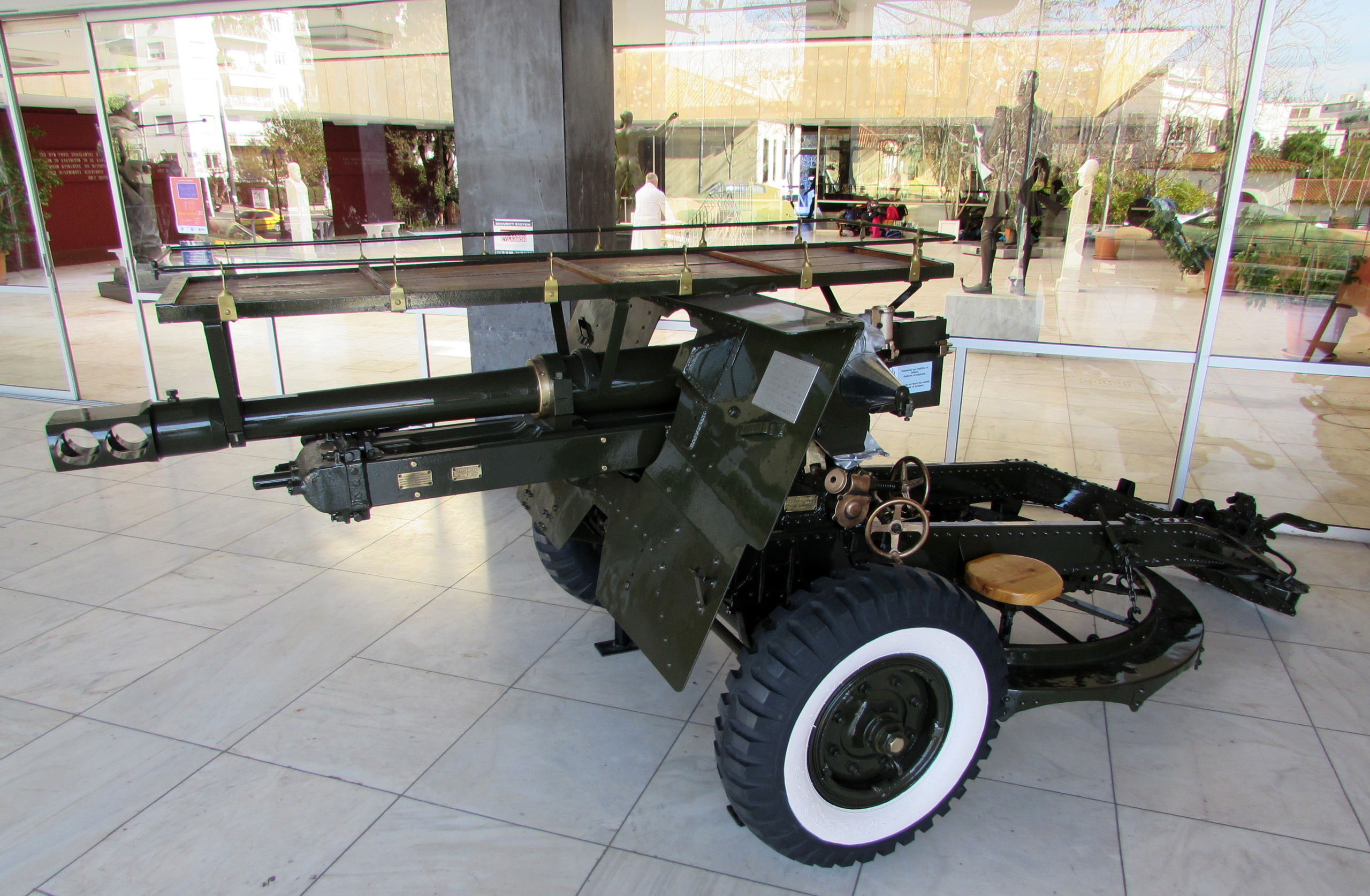
A 25 Pounder Mark I Rapid Fire British Field Gun used by the Hellenic Army during WWII. After it was retired, it was used to carry the dead during ceremonial funerals
A gallery of uniforms on mannequins greets you after you enter the foyer. The second floor, shaped like a square donut, is devoted entirely to World War II. My son and I made sketches, chatted with the guards, and read the informative plaques. We were eager to learn details about the theater in and around Greece that involved countless islands, Bulgaria and Turkey, Palestine and the Middle-East, the northern coast of Africa, and of course, Italy. A particularly interesting story highlighted the campaign of the "Sacred Company," whose motto was:
ΕΚ ΤΗΣ ΚΟΝΕΩΣ ΜΟΥ ΑΝΑΓΕΝΝΩΜΑΙ
From my ashes I'm reborn
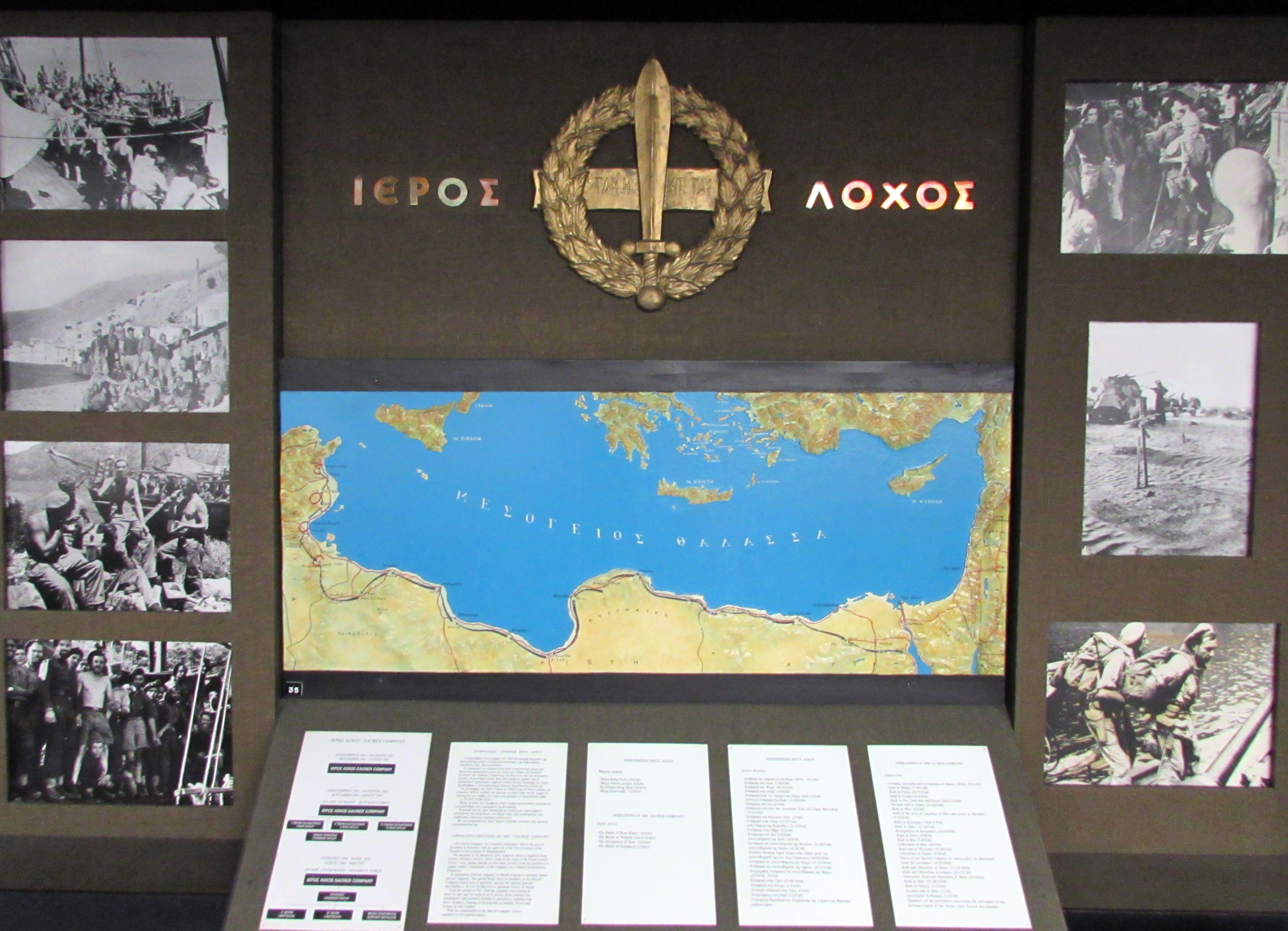
A collection of photos and information charting the path of the ΙΕΡΟΣ ΛΟΧΟΣ ("Sacred Company")
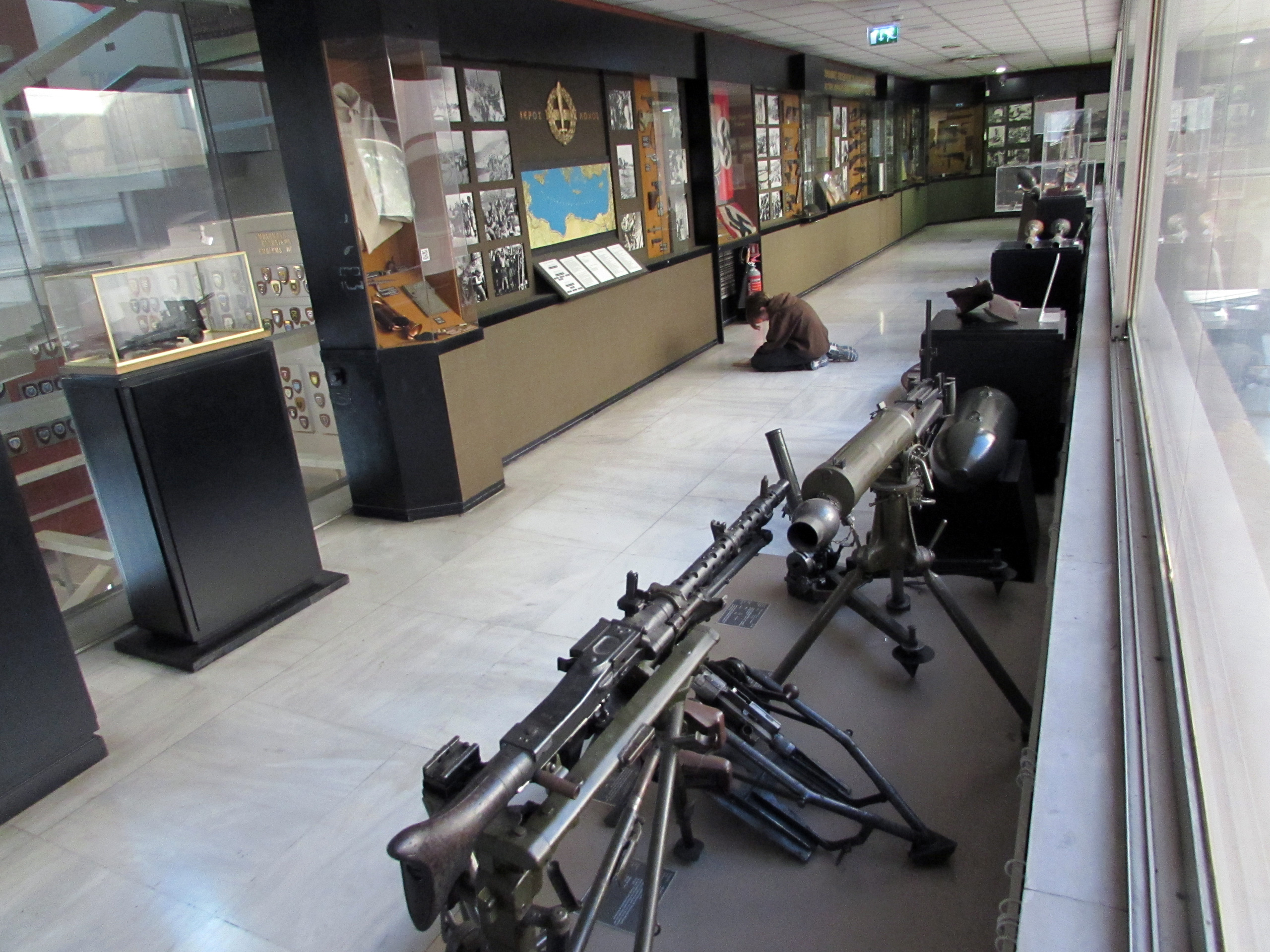
The second floor of the museum is devoted primarily to telling the story of World War II
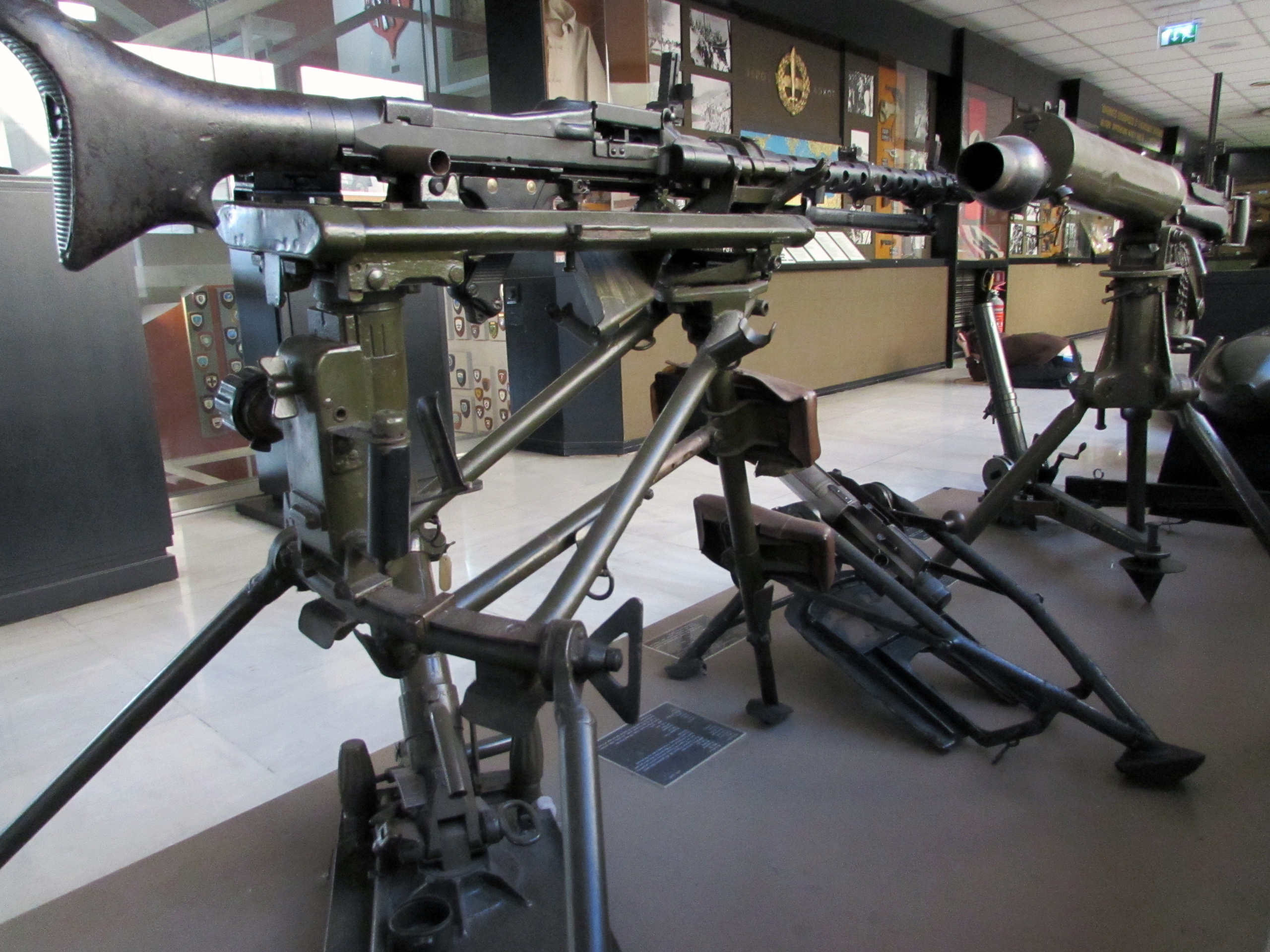
An MG-34 Machine Gun used by the German Army, then captured as loot and used by groups of the National Resistance, a Vickers MkI machine gun, used by the British Army and eventually by the Greek Army after 1942, and a German 50mm Mortar, also looted and re-used by the National Resistance during the German, Italian, and Bulgarian occupation in Greece 1941-44
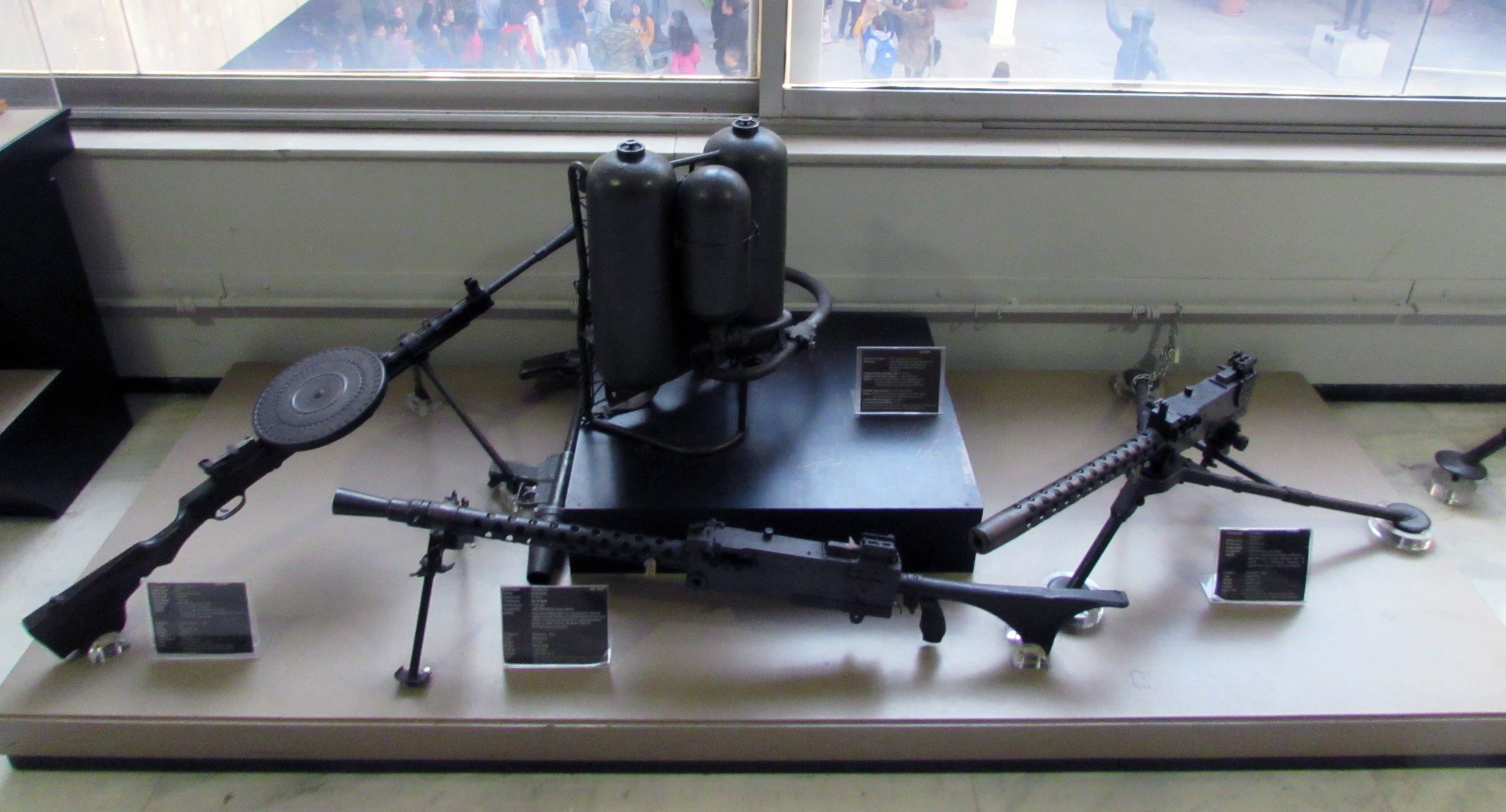
A Russian Degtyaryov machine gun (DP-28), two American Browning M1919 machines guns, and an American M2-2 Flamethrower
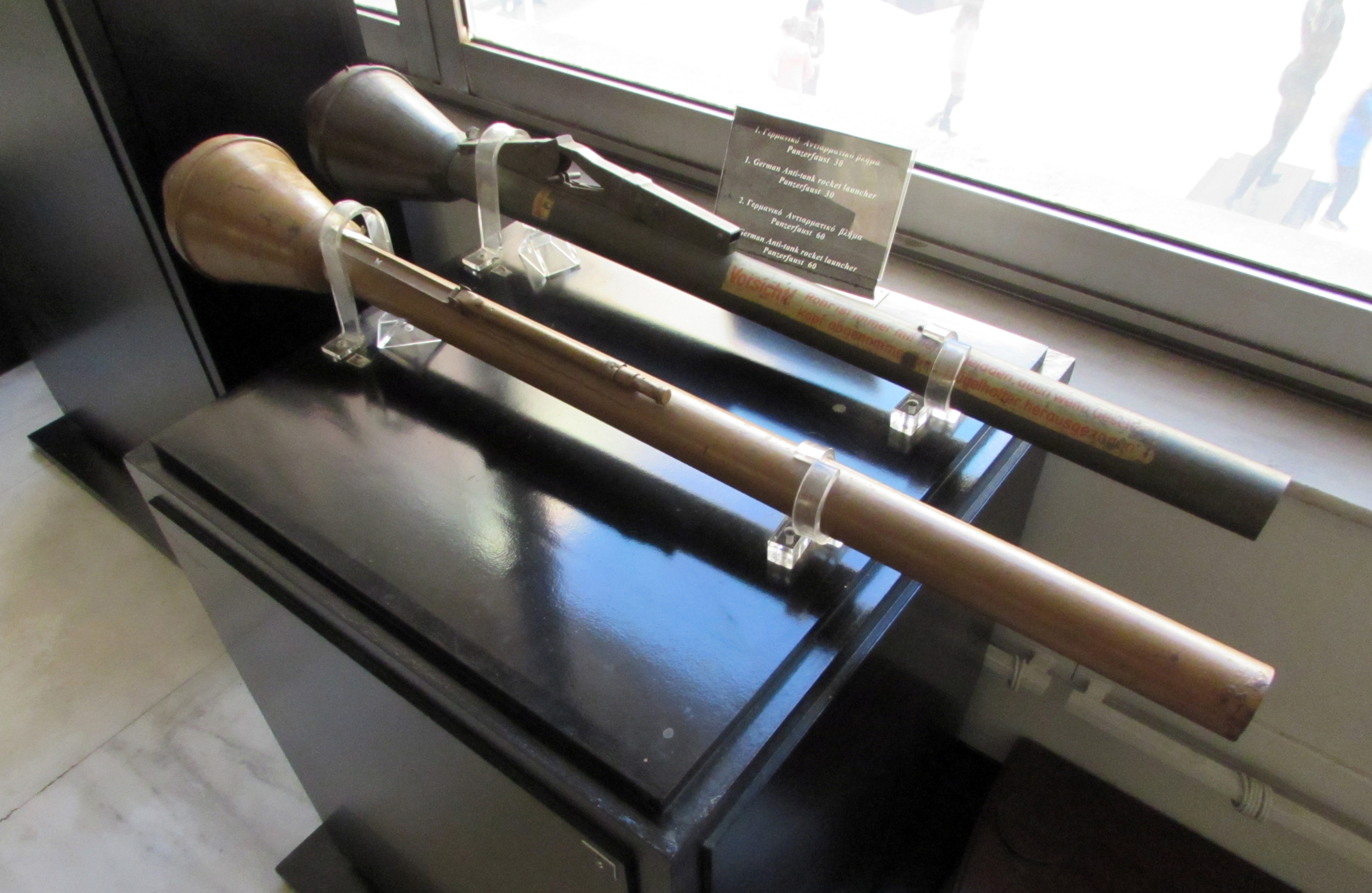
German Panzerfausts 30 & 60
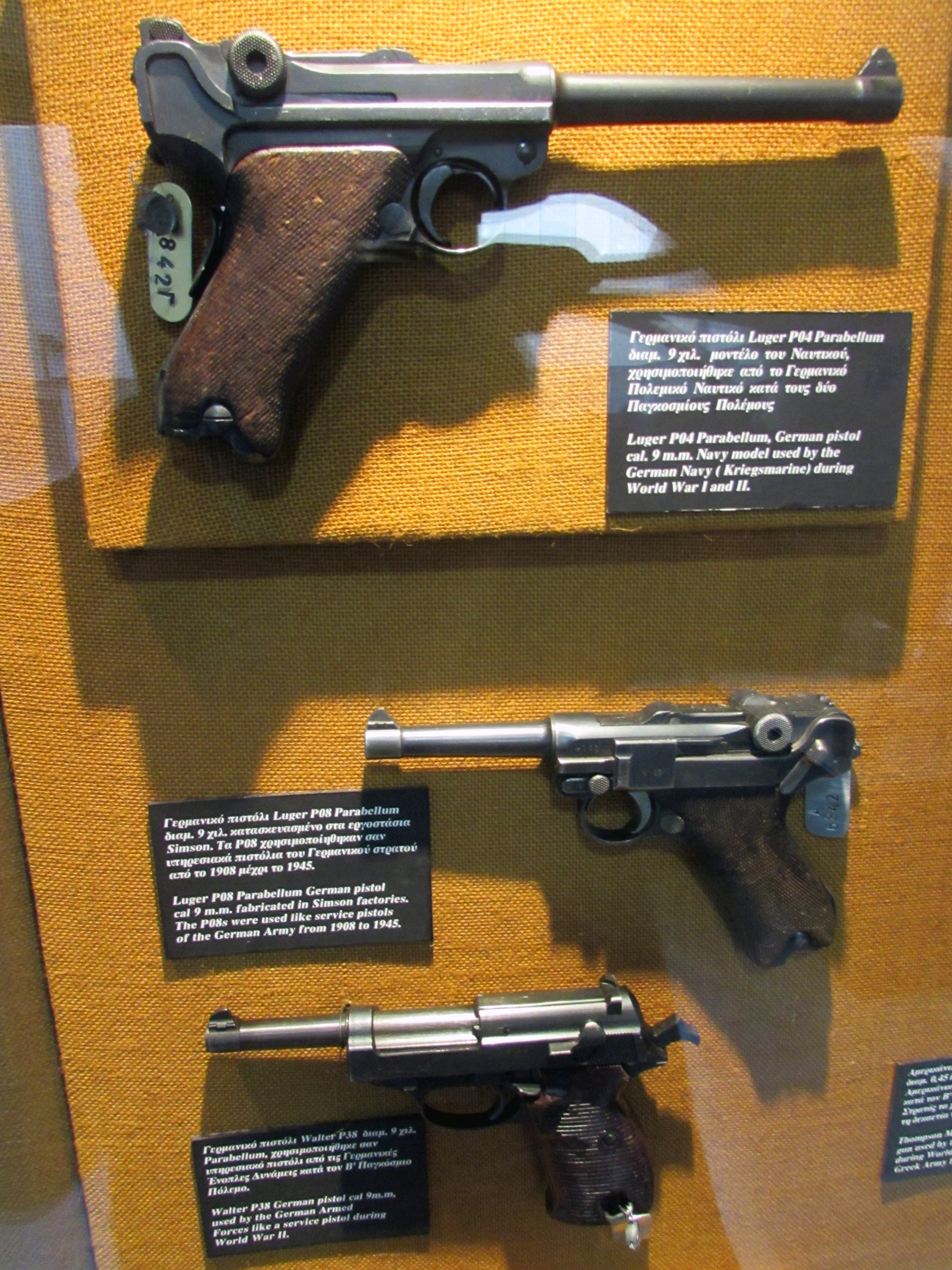
Captured Lugers and a Walter P38. Click on the pic to zoom in and read the descriptions
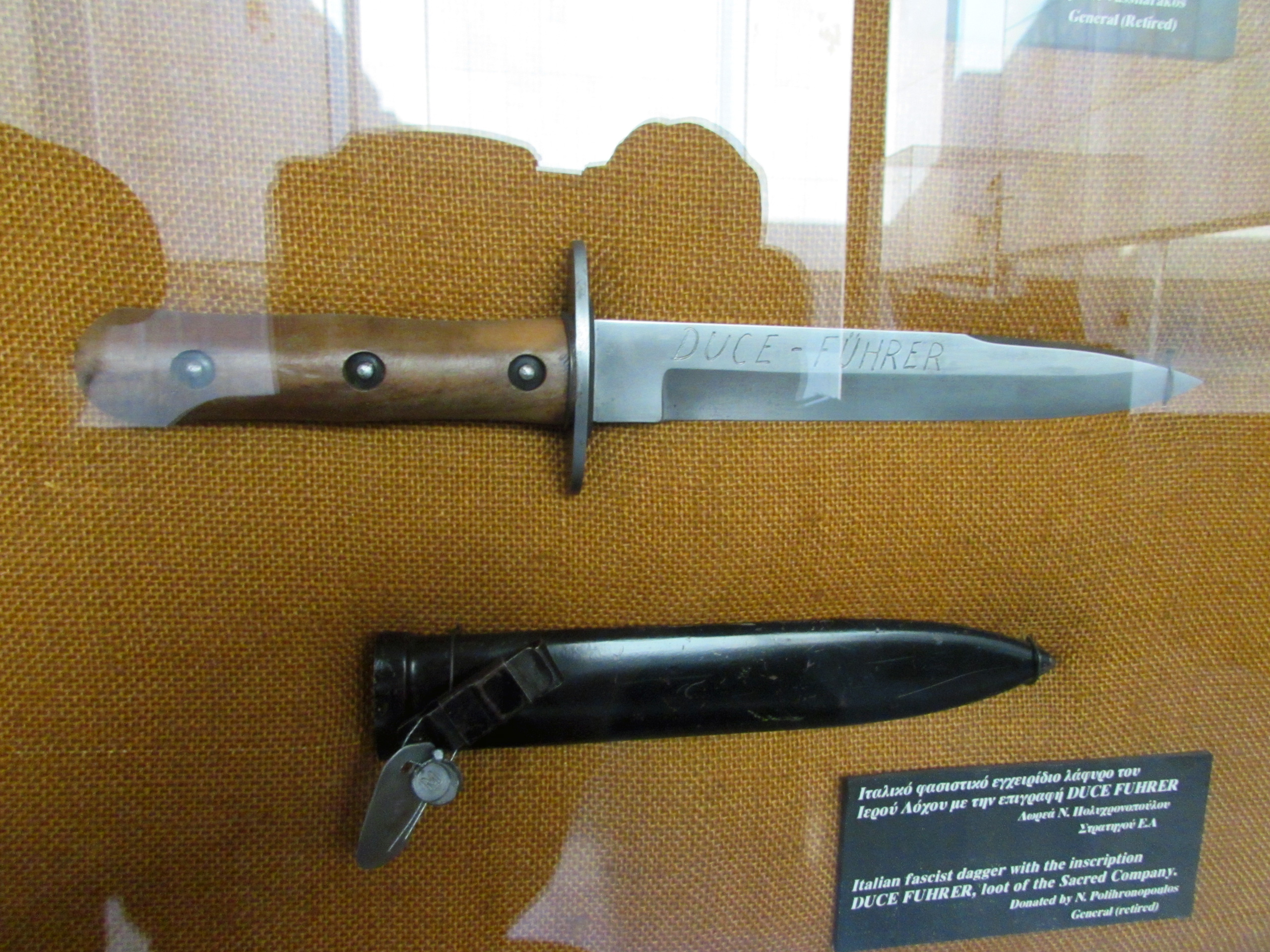
A "fascist dagger" inscribed with "DUCE FÜHRER," captured by the Sacred Company
!The Invasion of GreeceGreece wanted to keep themselves out of World War 2 and especially, avoid a military confrontation with Germany. But on the 28th of October 1940, the Italian Army attacked on the orders of Mussolini, who wanted to expand his empire. This drew the British to intervene. They captured Crete and fortified themselves. On the 4th of November, the Italian troops were halted and the attack vanished. |
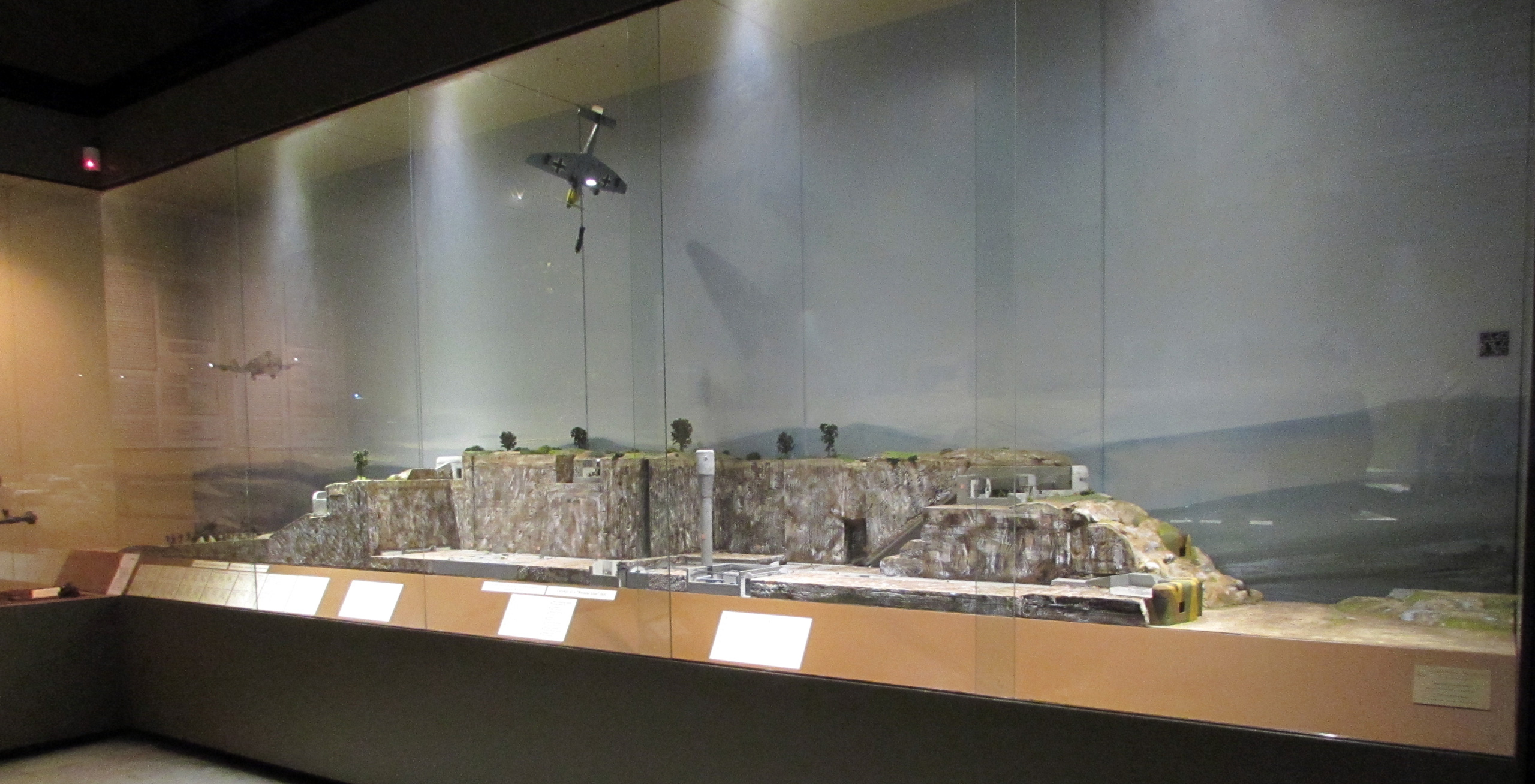
Diorama depicting bunkers on the Metaxas Line being bombed during the German invasion of Greece in April 1941
| !As an ally of Italy, Hitler feared the British would hinder German plans to use Romania's oilfields. So, on the the 6th of April 1941, the 12th Army of the Wehrmacht attacked Greece under the command of Willhelm List. The battle for the country lasted until the 1st of June 1941, at which point German troops had finished "Unternehmen Merkur", the plan to capture Crete with paratroopers. |
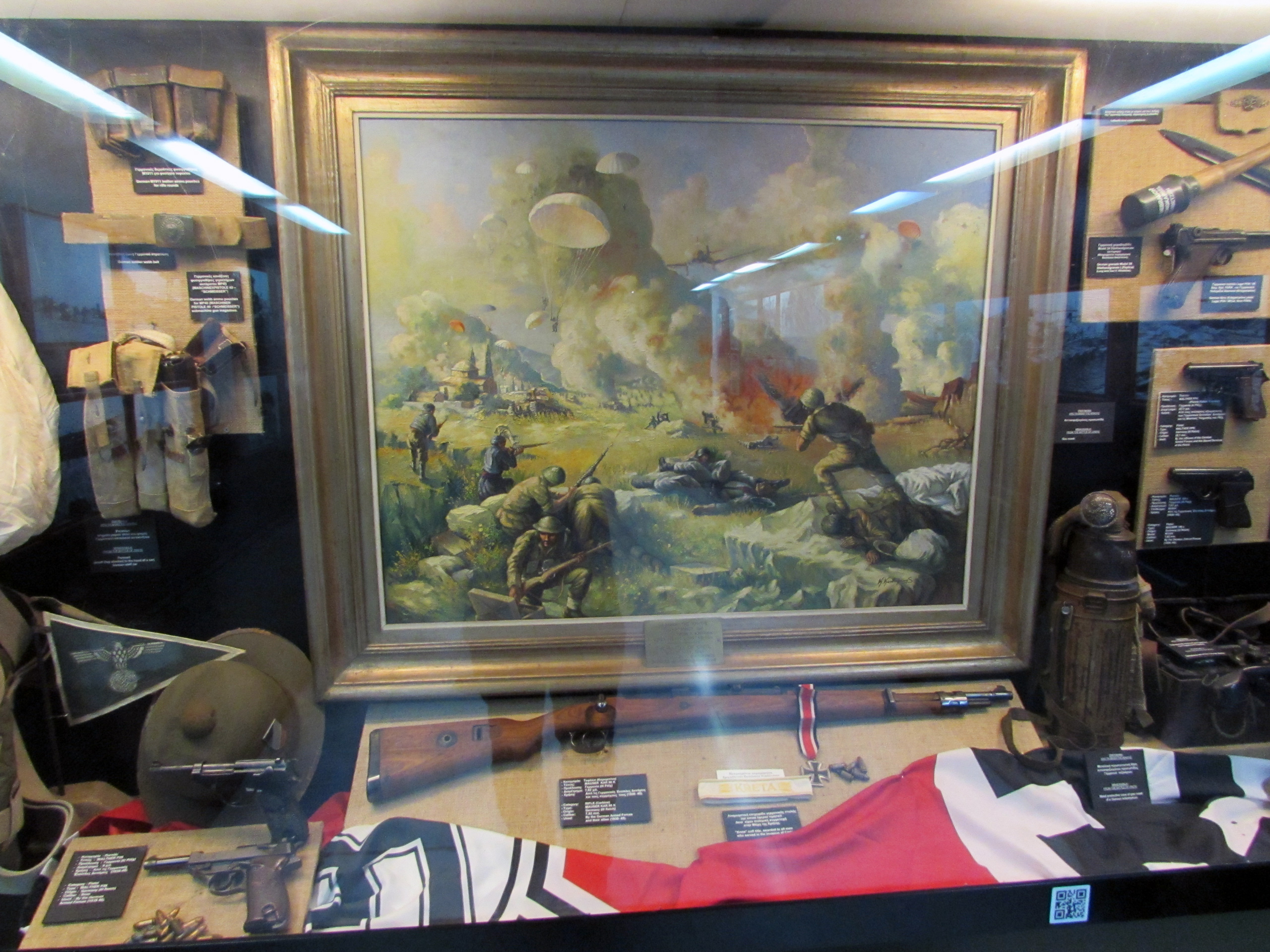
Captured paraphernalia and a painting of German paratroopers (Fallschirmjäger) attacking Crete in May-June 1941
| !Following the defeat of the Greek and British Empire armies led by New Zealand General Freyburg, which mostly consisted of troops from New Zealand, the country became occupied by the Italians and the Germans. In the following years, there were multiple massacres and mass deportations among the Jewish inhabitants of Greece, committed by Wehrmacht troops and the Waffen SS. |
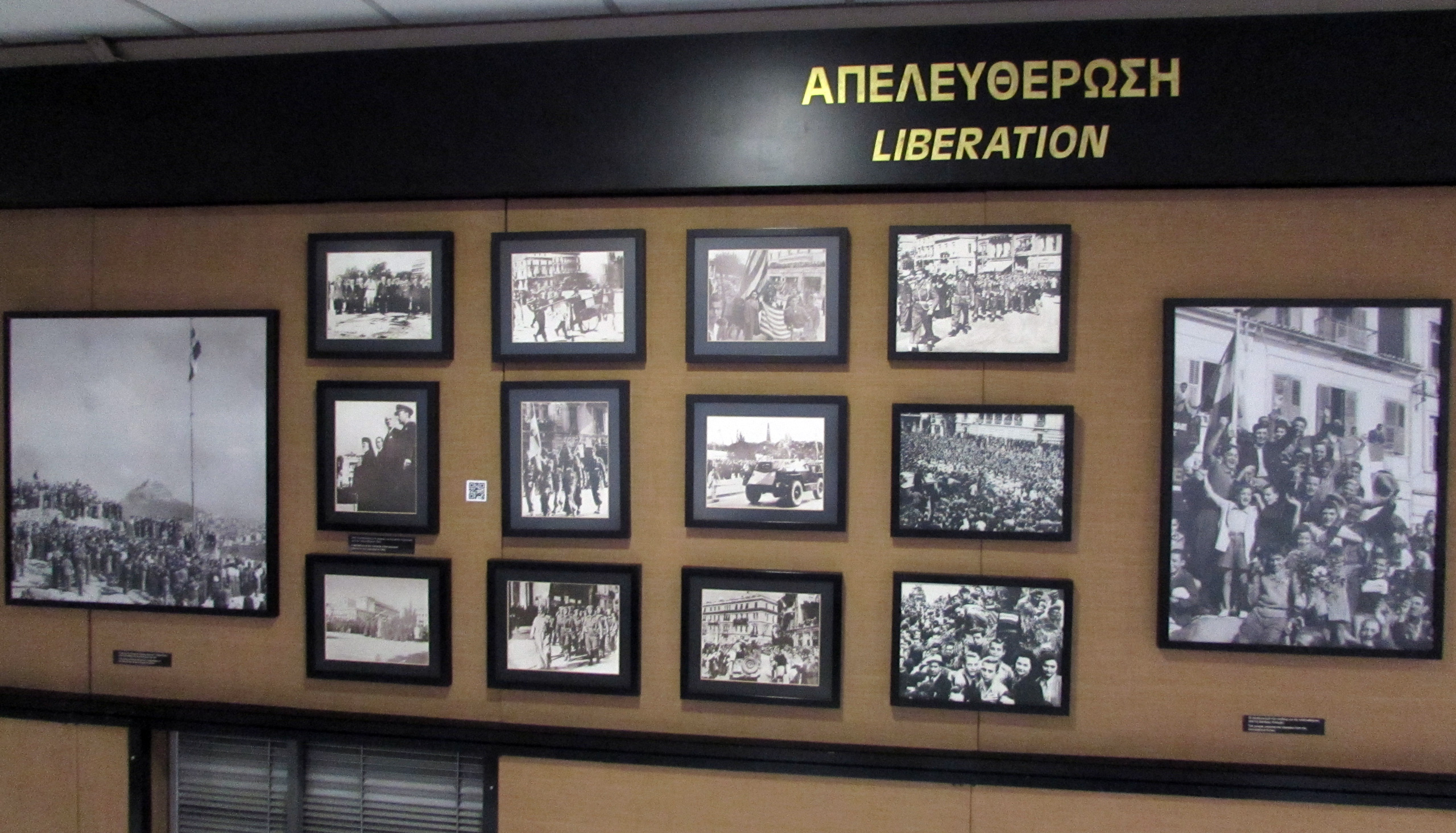
Photos of the Liberation of Athens by the British, around 14th October 1944
| !In October 1944, the Wehrmacht withdrew from Greece, due to partisans gaining momentum and the Russian Army closing in on Germany. During the retreat, the Germans enforced a "Scorched Earth" tactic and heavily damaged the infrastructure for years to come. The German occupation also forced the country into a civil war, which would rage on until 1949. |
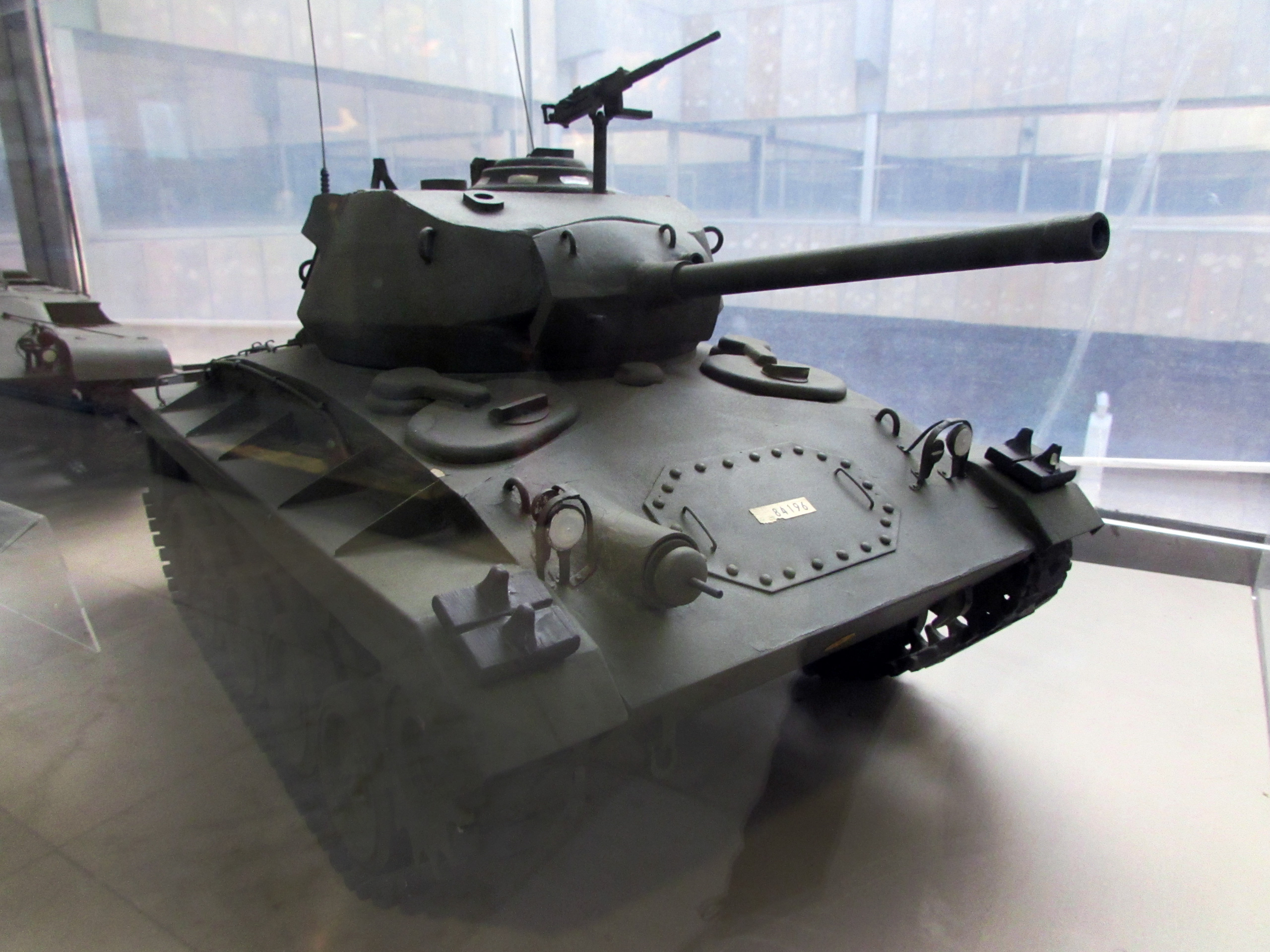
Model of the M24 Chaffee, a light tank used late in the war, designed to replace the M5 Stuart
Museums and memorial sites around the world dedicated to the Second World War tell the story of that great conflict from varying perspectives, each meriting a visit and some time for reflection. From the Greek War Museum, my son and I learned about many stories of which we were not previously aware -- the campaign of the "Sacred Company", the intense bunker and paratrooper Battle of Crete, the involvement and formation of the British SAS, and the operations that coincided with the Allied push up from the African continent -- just to cite a few. We highly recommend a visit to this relatively small museum, located right in the heart of Athens.











 cblanco ★
cblanco ★  보드카 중대
보드카 중대  VonManteuffel
VonManteuffel  Heartless Jäger
Heartless Jäger 